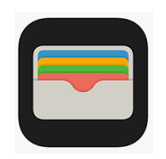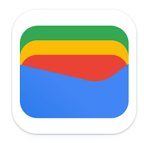Como é que eu…
Obtenho uma carteira digital (PayPal, Apple Pay, Carteira da Google)
Para utilizar uma carteira digital para efetuar pagamentos online e offline, terá de criar uma conta junto do fornecedor da carteira digital e adicionar os seus métodos de pagamento, tais como cartões de crédito ou de débito, à carteira. Assim que a conta estiver criada e os métodos de pagamento adicionados, pode utilizar a carteira digital para efetuar pagamentos.
Para efetuar um pagamento utilizando a carteira digital, tem de abrir a aplicação da carteira no seu dispositivo móvel e selecionar o método de pagamento que pretende utilizar. Em seguida, no ponto de venda, pode digitalizar um código QR ou tocar com o dispositivo num terminal de pagamento sem contacto para concluir o pagamento.
Também pode utilizar a sua carteira digital para efetuar pagamentos online. Para tal, terá de selecionar a opção de pagamento com uma carteira digital quando lhe for solicitado o pagamento no sítio Web da loja ou comerciante online. Depois, pode seguir as instruções na aplicação da carteira digital para concluir o pagamento.
A utilização de uma carteira digital é relativamente simples e direta. Com alguns passos para configurar a sua conta e adicionar os seus métodos de pagamento, pode utilizar a sua carteira digital para efetuar pagamentos de forma rápida e fácil.
PayPal
Website: https://www.paypal.com/uk/home
App:

- Abra a câmara do seu telemóvel
- Digitalize o código QR (A coisa enigmática à esquerda chama-se código QR. Quando se digitaliza um código QR, normalmente abre-se automaticamente um sítio Web. Neste caso, perguntar-lhe-á se pretende descarregar a aplicação PayPal).
- Obtenha a aplicação
Apple Pay/Carteira da Apple

- A carteira da Apple vem pré-instalada em todos os iPhone atuais. Procure a aplicação.
- Em seguida, toque em Adicionar Cartão e siga as instruções para adicionar o seu novo cartão.
Carteira da Google

- Descarregue a aplicação Carteira da Google.
- Abra a aplicação Carteira da Google.
- Se for novo na Google Wallet, ser-lhe-á pedido que adicione um cartão na primeira vez que abrir a aplicação. Pode introduzir os detalhes manualmente ou tirar uma fotografia do cartão.
Utilizo um cartão de crédito / cartão de débito nacional online
Para utilizar um cartão de crédito online, é necessário ter uma conta de cartão de crédito num banco ou instituição financeira. Terá de ter disponíveis os dados do cartão de crédito, tais como o número do cartão, a data de validade e o código de segurança, quer fisicamente quer guardados numa carteira eletrónica.
Assim que tiver estes dados, pode utilizar o seu cartão de crédito para fazer compras online, seguindo estes passos:
- Aceder ao sítio Web da loja ou estabelecimento comercial online onde pretende efetuar uma compra.
- Selecione os artigos que pretende comprar e adicione-os ao seu carrinho de compras.
- Avance para o checkout e introduza as suas informações de envio e faturação.
- Quando lhe for solicitado o pagamento, selecione a opção de pagamento com cartão de crédito.
- Introduza os dados do seu cartão de crédito, tais como o número do cartão, a data de validade e o código de segurança, bem como quaisquer outras informações necessárias.
- Reveja e confirme os detalhes do pagamento e submeta o pagamento.
Depois de submeter o pagamento, a transação será processada e a compra será cobrada no seu cartão de crédito. Receberá uma confirmação do seu pagamento e os artigos que adquiriu ser-lhe-ão enviados.
Em geral, a utilização de um cartão de crédito online é uma forma simples e conveniente de efetuar compras. Seguindo os passos acima, pode utilizar o seu cartão de crédito para efetuar pagamentos online de forma rápida e segura.
Utilizo a Banca Online
Para utilizar uma transferência bancária para efetuar pagamentos online, é necessário ter uma conta num banco ou instituição financeira que ofereça serviços bancários online. Necessitará também dos dados da conta bancária do destinatário, como o número da conta, bem como do montante que pretende transferir.
Quando tiver estes dados, pode utilizar uma transferência bancária para efetuar um pagamento online, seguindo estes passos:
- Aceda ao sítio Web ou à aplicação do seu banco.
- Inicie sessão na sua conta bancária.
- Selecione transferir dinheiro.
- Introduza os detalhes da conta bancária do destinatário, tais como o número da conta, bem como o montante que pretende transferir.
- Reveja e confirme os detalhes do pagamento e envie o pagamento.
- Antes de concluir a transação, ser-lhe-á pedido que autorize o pagamento introduzindo um PIN ou, mais provavelmente, utilizando a sua impressão digital ou o Face ID.
Depois de submeter o pagamento, a transação será processada e o dinheiro será transferido da sua conta bancária para a conta bancária do destinatário. Receberá uma confirmação de pagamento.
